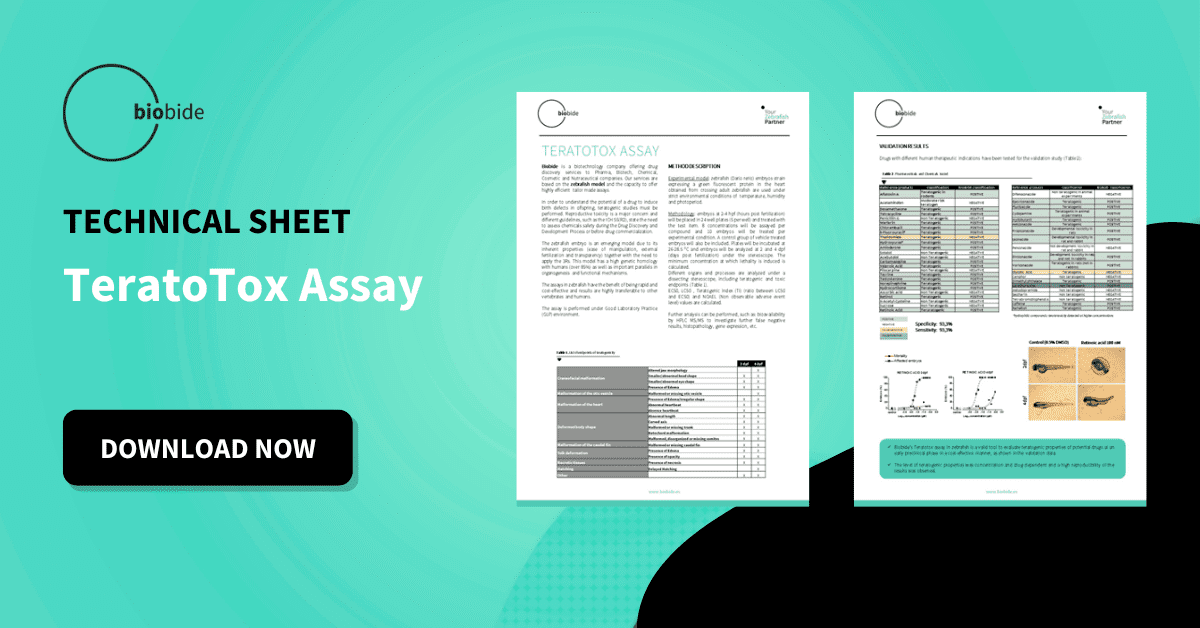Reproductive toxicity tests are essential to test and study the reproductive cycle in humans. The testing examines the reproductive cycle, from pre-natal to post-natal development. Without these tests, the toxicity of certain drugs and substances is unknown and could be harmful to human health.

What is reproductive toxicity?
Reproductive toxicity refers to the damaging effects chemicals can have on male and female fertility and the creation of human life. For many couples this is a heart-breaking problem that either means they are unable to get pregnant, the foetus is unviable (causing spontaneous or planned abortion), or the damage is not seen until a child is born or even as they get older.
Human reproduction is a sensitive and delicate process that can suffer dreadful consequences as a result of exposure to chemicals that we often don´t even know exist in our day-to-day lives. Examples of these are lead, cadmium, mercury, industrial solvents, radiation and bisphenol A (used in plastic and aluminium cans).
One of the most publicised cases of toxicity affecting reproduction is that of the drug thalidomide. This was prescribed to women in the 1950s and 60s as a medication to treat morning sickness in pregnant women. At that time, it was not known that it affected embryo development and caused severe birth defects such as limb malformation.
This situation caused a review of the importance of drug toxicity testing and led to many more protocols being introduced.
The importance of testing in early drug discovery for reproduction
Reproduction problems can occur at any stage and are not only linked to the unborn foetus and pregnancy. The male sperm can be affected by exposure to particular chemicals as can a woman’s eggs. The difficulty is that sometimes these problems do not become apparent until later in life, which is why testing in early drug discovery is so important.
Exposure to certain substances can seriously affect the reproductive cycle. This ranges from the development of the embryo to fertility issues and post-natal development. Exposure to certain chemicals can affect:
- Sperm health
- Egg development
- Fertilisation
- Implantation
- Delivery
- Lactation
Testing can show to what extent a chemical affects reproduction and how it can harm an embryo in the initial and later stages of human life.
Products such as food additives, pesticides, industrial chemicals, tobacco smoke and medication can all have an adverse effect on reproduction.
Which tests are used in reproductive toxicity?
Traditionally animal testing has been used for reproductive drug discovery to predict the effects of chemicals and substances on the human form. But these are often not possible until the late stage of drug testing for a variety of reasons and can be very costly.
Zebrafish play a valuable role finding New Molecular Entities (NMEs) during the drug discovery process. NMEs contain an active moiety that has not been approved by the FDA (Food and Drug Administration). The moiety refers to a part of a molecule and in this situation, a drug may contain a substance that has not been FDA approved.
It can take approximately 12 years to gain drug approval, from development to clinical trials and launch on the market. This is a long time considering that new diseases are constantly evolving (COVID-19 for example), and the pharmaceutical industry cannot keep up with the need for new drug discoveries, in reproduction and other areas.
The cost is also an important factor; it can cost billions to develop a drug that may be abandoned at a particular stage.
Zebrafish are an ideal solution to this problem as they are cheap to produce and have a very similar genetic makeup to that of humans. At Biobide we take pride in being the trusted partner for many pharmaceutical companies looking for teratogenic assays. These assays focus on the developmental toxicity of NMEs that may produce larvae malformations. Using zebrafish can identify how a drug can be safe and effective in treating illnesses and diseases. This can be done at early stages and it is much more efficient and cost-effective than having to return to the initial testing stages.
The zebrafish, therefore, plays a very important role in reproductive drug discovery, as it has the potential to improve the availability and timing of successful reproductive drugs.





